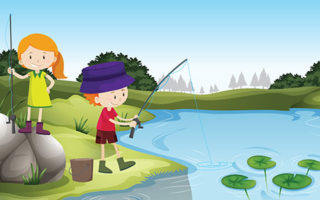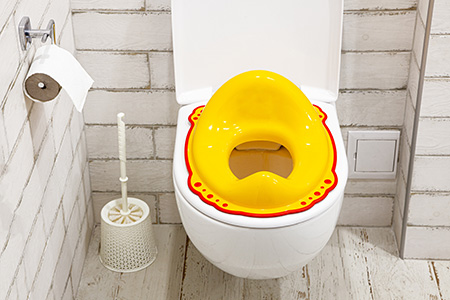 As in all child raising activities you’ll hear lots of stuff and nonsense about what to do, what not to do, what’s right, what’s not, who’s easier to train: boys or girls, etc. You’ll do best to ignore all of the dogmatic and negative information. Approach the task from a positive mental and emotional frame of mind and you’ll do well.
As in all child raising activities you’ll hear lots of stuff and nonsense about what to do, what not to do, what’s right, what’s not, who’s easier to train: boys or girls, etc. You’ll do best to ignore all of the dogmatic and negative information. Approach the task from a positive mental and emotional frame of mind and you’ll do well.
There are those that say you can toilet train a child at eight months of age. And even extremists who suggest that two months of age is the time to start. If you’re up to this, I’ll let you figure it out. For the rest of you, I’ll offer my experience, with the intention to give you encouragement and tips for success.
First thing to keep in mind: You can do this! Think about it. Most people you know are toilet trained. And chances are, they have been toilet trained for a very long time. So, no matter how daunting the task may seem, you can expect to achieve success, and in the grand scheme of things, you can expect to achieve success in a relatively short period of time.
Second, a very important thing to remember is that this training exercise with your child is not just about training your child, it’s about YOU being in training. Let’s face it, you’re the one that’s most motivated to have the task accomplished. And you’re the adult, so you have to take on the greater responsibility…like remembering to take your toddler to the bathroom. In my day, the timer on the oven prompted many reminders. Nowadays, you have your phone. Setting alarms and timers should be easier than ever.
As a mother of five boys and three girls, I can’t tell you that either boys or girls are easier to train. Though my experience isn’t a wide study, by any means, my experience is interestingly broader than many who adamantly make such generalizations.
As to the ideal age of training, this varied among my children. Interest, awareness, bladder capacity, family activities and peer pressure all contributed to the mix.
 Interest and awareness One child used the toilet when I held them to it at 8 ½ months. I think this happened three times within two days. We tried a few other times, but not with success. Evaluating the situation, the family activities and my responsibilities at the time, I decided that we would wait until there was a bit more interest, awareness and ability on the part of my young one. Success came later, less than a year later, with no regret on my part.
Interest and awareness One child used the toilet when I held them to it at 8 ½ months. I think this happened three times within two days. We tried a few other times, but not with success. Evaluating the situation, the family activities and my responsibilities at the time, I decided that we would wait until there was a bit more interest, awareness and ability on the part of my young one. Success came later, less than a year later, with no regret on my part.
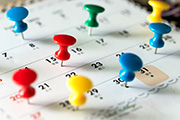
Family circumstances Another child expressed interest in training with some success…and then there was sickness…and then there was a new baby born. Training went by the wayside while I attended to the new nursling and couldn’t pop up as much as training required. When we started again, an airplane trip and extended travel interrupted again. The remodel of a bathroom also proved to be a disruption. These multiple setbacks postponed the training, but not for long. Once we could attend to the business, it was done in a short time.
I used a “potty” chair. A small plastic, stand-alone unit that could sit across from the bathroom toilet. A deflector cup in front was especially handy for boys. My young ones were often excited to sit on it…before bath, or even while another family member used the big toilet.
Often times the evidence of success came by “surprise” to the user of the potty chair, and they were astonished to see what they had done.
Success on the potty chair, in whatever form it appeared was praised by me, by Daddy and other family members who might gather and be amazed. If Daddy wasn’t home to see the results of the first efforts, sometimes we would wait until he arrived home. Once proper praise was received, I emptied the contents into the toilet bowl, and it became the job of the little one to flush the toilet. I never allowed my toddler to flush the toilet otherwise, so this became a natural reward for the activity, only to be done upon performance .
In addition to a potty chair, I also used a seat that clipped to the regular toilet seat, but this requires holding a young child, so they don’t fall off…or in. A nice option, but not to be left unattended unless they are older.
Overall, when a child is ready and has opportunity I would say the main toilet training can mostly take place within a couple of weeks. It’s the making of a new habit. But it will still be your awareness and responsibility to make sure the child follows through with regular trips to the bathroom to experience success.
Things to consider:
 Training pants I tried thickly padded training pants and was completely unimpressed. Now I had thick fabric which absorbed quite a bit of liquid, but not nearly enough. Much of the liquid escaped around leg holes or just didn’t absorb. What did absorb was now to be washed out, and because of the thickness of the fabric, it would take an extra-long time to dry.
Training pants I tried thickly padded training pants and was completely unimpressed. Now I had thick fabric which absorbed quite a bit of liquid, but not nearly enough. Much of the liquid escaped around leg holes or just didn’t absorb. What did absorb was now to be washed out, and because of the thickness of the fabric, it would take an extra-long time to dry.
 Regular underwear Regular underwear worked best for my training experience. First of all, my toddler was proud to be wearing “big” underwear, and they wanted to keep them dry. Second, these were not going to hold any liquid at all, so if there was an accident, the toddler was certainly going to know about it. Third, I was even more motivated to keep up with regular trips to the bathroom, after all, there was going to be a big mess to clean up, if I didn’t.
Regular underwear Regular underwear worked best for my training experience. First of all, my toddler was proud to be wearing “big” underwear, and they wanted to keep them dry. Second, these were not going to hold any liquid at all, so if there was an accident, the toddler was certainly going to know about it. Third, I was even more motivated to keep up with regular trips to the bathroom, after all, there was going to be a big mess to clean up, if I didn’t.

Disposable Pull-ups What a revolution in diaper history! These were available when I was training my last child…maybe my last two. They are great, if used strategically. At worst, they can make you and your child lazy…and prolong the training process.
The best way I found to use these was at nap time…over the child’s underwear. I would tell them they were doing so well, but we wanted to put on a pull up, “just in case they had a little accident while they were asleep.” I quickly took this off after nap time and placed them on the potty chair.
Travel time is another great time to use a pull up. Just remember the pull-up should be used as a safety measure, not an excuse to vacation from your training activity.
 Nighttime I was warned that nighttime training would take much longer. That wasn’t true for any of my children. I found that they pretty much went together. Once you are experiencing success during the day, nighttime is also a great time to use underwear with a disposable pull-up over the top.
Nighttime I was warned that nighttime training would take much longer. That wasn’t true for any of my children. I found that they pretty much went together. Once you are experiencing success during the day, nighttime is also a great time to use underwear with a disposable pull-up over the top.
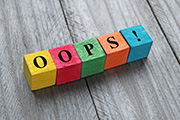 Accidents Once we started having success and the toddler was wearing underwear, I often noticed that when an accident happened during the day, it would often be followed by another accident and another. An accident early in the day, or waking up to an accident, often continued throughout the day. It seemed as if bladder control was lost for the day. Follow up with more frequent trips to the bathroom, adding pull-ups and keep up your patience. Tomorrow is a new day.
Accidents Once we started having success and the toddler was wearing underwear, I often noticed that when an accident happened during the day, it would often be followed by another accident and another. An accident early in the day, or waking up to an accident, often continued throughout the day. It seemed as if bladder control was lost for the day. Follow up with more frequent trips to the bathroom, adding pull-ups and keep up your patience. Tomorrow is a new day.
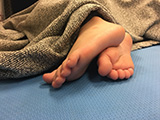 Bedwetting Nighttime bedwetting, either continual or occasional, can be a continued challenge. Chiropractic adjustments may help with this. When my husband was in chiropractic practice, he would adjust young, and not so young patients, who had bed wetting challenges. The adjustments relieved nerve pressure in the spine which allowed proper bladder control. One particular patient was a 13-year old boy. Every few weeks he would tell his mother that he needed to go see Dr. McFie again.
Bedwetting Nighttime bedwetting, either continual or occasional, can be a continued challenge. Chiropractic adjustments may help with this. When my husband was in chiropractic practice, he would adjust young, and not so young patients, who had bed wetting challenges. The adjustments relieved nerve pressure in the spine which allowed proper bladder control. One particular patient was a 13-year old boy. Every few weeks he would tell his mother that he needed to go see Dr. McFie again.
When our children suddenly had night accidents, Tom would often find that they needed an adjustment to the area of the spine that affected the nerves to the bladder. Once adjusted, bladder control was restored and the bed was dry in the morning.

Intake of fluids I don’t believe it’s effective to reduce intake of fluids while toilet training…or any other time. Children should be allowed to drink as much water as they want. We found that not even big drinks of water before bed proved to be contributing factors to accidents. Dehydration is not ideal for any bodily functions.
Natural juices should be consumed in moderation. The concentrated sugars in juices will cause more frequent urination, and so it’s better to avoid drinking fruit juices before bed. I’m not a fan of sugary drinks. If these are consumed, you’ll definitely need to increase the frequency of trips to the bathroom.
 Bowel habits Be aware of your child’s bowel habits. Consider the time of day they usually eliminate. Your child may have a habit of finding a quiet place for this activity. Be aware of where the child goes and quickly re-position them to the toilet. Re-positioning should be done as quietly and calmly as possible, in order to cause the least disturbance as possible. This will give greater opportunity for success.
Bowel habits Be aware of your child’s bowel habits. Consider the time of day they usually eliminate. Your child may have a habit of finding a quiet place for this activity. Be aware of where the child goes and quickly re-position them to the toilet. Re-positioning should be done as quietly and calmly as possible, in order to cause the least disturbance as possible. This will give greater opportunity for success.
After meals is a great time to provide time to sit on the toilet because this is a natural time for elimination. Let the child know why they are on the toilet and what you anticipate happening. As success happens, praise them and encourage them to continue the activity, so the rest of it doesn’t end up being completed off the toilet.
 Rewards Giving treats or prizes for success never made much sense to me or my kids…or at least my first one where I first tried it. Natural rewards seemed to be the greatest rewards. Natural rewards included: praise, flushing the toilet and wearing “big boy” or “big girl” underwear.
Rewards Giving treats or prizes for success never made much sense to me or my kids…or at least my first one where I first tried it. Natural rewards seemed to be the greatest rewards. Natural rewards included: praise, flushing the toilet and wearing “big boy” or “big girl” underwear.
 Continued reminders Once your child is toilet trained you may think that your days of providing reminders are over. Think again.
Continued reminders Once your child is toilet trained you may think that your days of providing reminders are over. Think again.
You’ll continue to remind your children to use the bathroom before bed and before leaving the house. Kids get busy, they’re having fun and they don’t want to be bothered by having to use the bathroom. You’ll learn to recognize the dance, the fidgeting or the cross disposition that leads you to tell your child to go to the bathroom.
Yes, even to your teenager, only instead of telling your teen what to do, you’ll pose a question, “Do you need to go to the bathroom?” Just consider it nice to know you’re needed!

